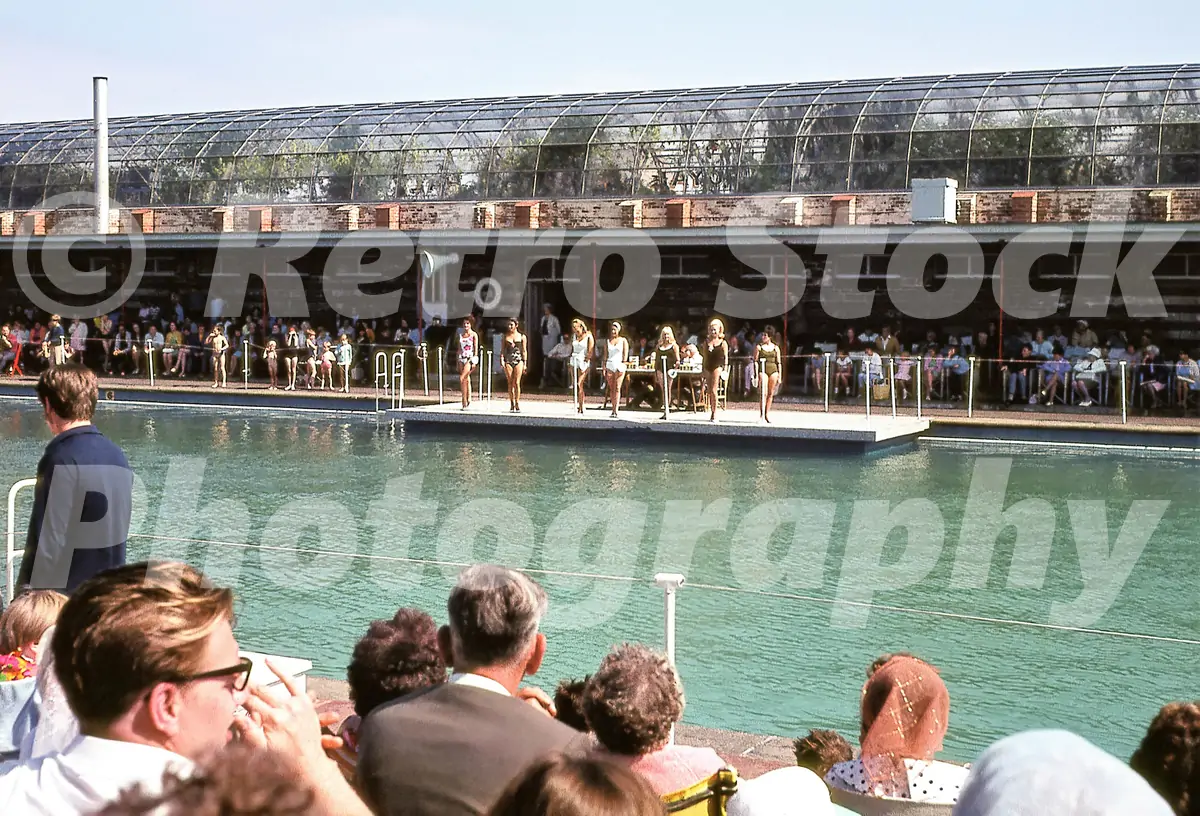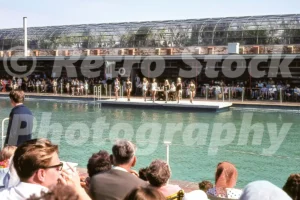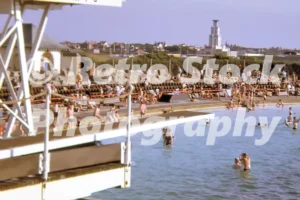Once key landmarks on Rhyl’s bustling seafront, the Outdoor Swimming Pool and the Floral Hall together helped define the North Wales resort’s heyday from the 1930s through to the 1970s. Their architecture, appeal, and atmosphere made Rhyl a major attraction for holidaymakers seeking sunshine, sea air, and leisure by the coast.
The Rhyl Outdoor Swimming Pool, often referred to locally as the “Outdoor Baths,” opened in June 1930. At the time, it was one of the largest sea-water swimming pools in Britain, measuring an impressive 330 by 90 feet. Designed by A. A. Goodall, it included over 300 individual changing cubicles, showers, tea rooms, and even slipper baths. The pool held 775,000 gallons of sterilised seawater, which was constantly replenished at a rate of 95,000 gallons per hour—an engineering feat for its time.
During its opening season in 1930, the pool attracted over 223,000 visitors, confirming its popularity and vital role in Rhyl’s tourist economy. For decades, families and young swimmers flocked to its diving boards and sunbathing terraces. It became a place not only to swim but to socialise, relax, and show off the latest swimwear styles. However, by the 1970s, changing holiday habits, rising maintenance costs, and the growing appeal of foreign travel led to the pool’s decline. It was eventually closed and demolished. The Rhyl Events Arena now occupies the site, hosting open-air concerts and community events.
Just a short walk away stood another much-loved attraction—the Floral Hall. This striking glass structure opened on 14 May 1959 at a cost of £21,000. A true indoor garden paradise, it offered visitors the chance to wander among tropical plants, fountains, and flower displays even on the dullest Welsh day. Within just three years, the Floral Hall had welcomed over one million people.
In the winter of 1960–61, heating was added to the building, allowing for the cultivation of more exotic plants and the introduction of free-flying tropical birds. On 8 June 1960, the building received a royal visit from the Duke and Duchess of Gloucester, after which it was renamed the Royal Floral Hall. In later years, it was rebranded as the Butterfly Jungle in an effort to revitalise its appeal, but it eventually fell victim to changing times and was demolished in the early 1990s.







Reviews
There are no reviews yet.